A function is a kind of relation where you hand it something, and it hands you EXACTLY one thing back.
The domain of a function is anything you can possibly give the function.
The range of a function is anything it could possibly give back.
Example Consider the function $f$ below.
$ \begin{array}{rcr} D & & R \\ \hline 3 & \rightarrow & -1\\ 2 & \rightarrow & 1\\ 1 & \rightarrow & 3\\ 0 & \rightarrow & 0 \end{array} $
When you hand this function $3$, it gives you back $-1$.
For this we write $f(3)=-1$.
The domain of the function is $D=\{0,1,2,3\}$ and the range is $R=\{-1,0,1,3\}$
Example
$ \begin{array}{rcr} D & & R \\ \hline 3 & \rightarrow & -1\\ 2 & \rightarrow & 1\\ 1 & \rightarrow & 3\\ 0 & \rightarrow & 0 \end{array} $
Anything you hand a function is called an input.
Anything the function hands you back is called an output.
So, when you input $2$ into the function, you get an output of $1$.
Example: Functions as collections of ordered pairs.
Again consider our old friend given $f$ below:
$ \begin{array}{rcr} D & & R \\ \hline 3 & \rightarrow & -1\\ 2 & \rightarrow & 1\\ 1 & \rightarrow & 3\\ 0 & \rightarrow & 0 \end{array} $
We can represent this function as a collection of ordered pairs:
$f=\{(3,-1), (2,1), (1,3), (0,0)\}$
A Word of Caution: Not all relations are functions.
Example: The relation given by the table below is NOT a function.
$ \begin{array}{rcr} D & & R \\ \hline 2 & \rightarrow & 3\\ 2 & \rightarrow & -3\\ 0 & \rightarrow & 5\\ 4 & \rightarrow & 0 \end{array} $
Note: We may represent the above relation as a collection of ordered pairs: $\{(2, 3), (2, -3), (0, 5), (4, 0)\}$
Graphing Functions: Since functions are simply collections of ordered pairs, we may graph them.
Example: Graph the function $$f=\{(3,-1), (2,1), (1,3), (0,0)\}.$$
Example: Graph the relation (not a function): $$\{(2, 3), (2, -3), (0, 5), (4, 0)\}$$
Graphs of Functions Which of the graphs below represent functions?
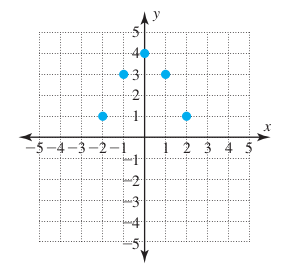
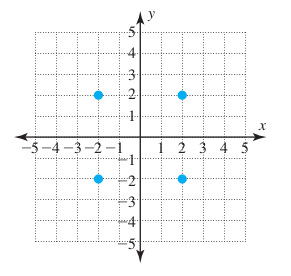
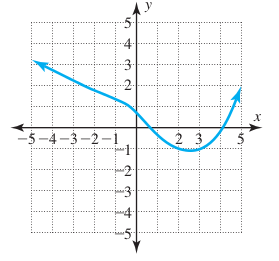

Graphs of Functions
The Vertical Line Test: A vertical line may intersect the graph of a function only once.
Graphs of Functions: Domain and Range
We may find the domain and range of a function by looking at its graph.
Example


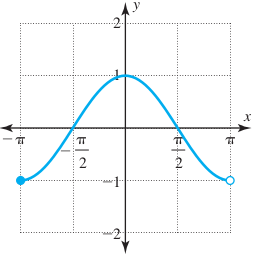
Function Notation: A function may also be defined by an algebraic rule.
Example: $f(x)=-x^2+3x+4$
Using this rule, complete the table of ordered pairs
$f=\{(-1,\,\,\,\,\,),(0,\,\,\,\,\,),(2,\,\,\,\,\,)\}$
Example: $f(x)=-x^2+3x+4$
When we graph all ordered pairs we get the following graph.
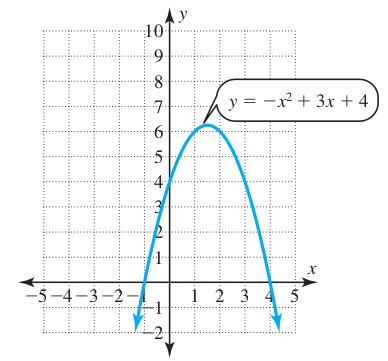
For what values of $x$ does $f(x)=6?$